Fort Saint James
It’s 1806, and the Hudson Bay Company is one of the British Empire’s most far-flung private enterprises. As with most of its out-reaching expeditions, Britain expects the Company to conduct local trade and return far-away riches back to Mother England. Lewis and Clarke have completed their awesome expedition across the future western United States, and competition for land control is keen between the U.S. and Britain.
Long successful in fur trading near its namesake in the east, the Hudson Bay Company has extended itself across the entire northern continent in search of new natural wealth. In order to sponsor such trade in the vast wilderness, Fort Saint James is constructed on the shore of Stuart Lake. It is the only white settlement in the area, the beginning of a sovereign presence that will eventually negotiate the 49th parallel. The fabulous fur trade of the 1800’s, and later a burgeoning gold mining industry, will have their foundations in this lonesome bastion of European expansion. It is destined to become the capital city of New Caledonia, the territory predecessor of British Columbia.
Today, some of these 200-year-old structures still remain at the Historic Site. At first blush, the buildings look primitive and harsh. Log walls with mud chinking, small, blurry float-glass windows, smoky Franklin stoves for heat. But for the frontiersmen and soldiers of the early 1800’s, this was luxury indeed.
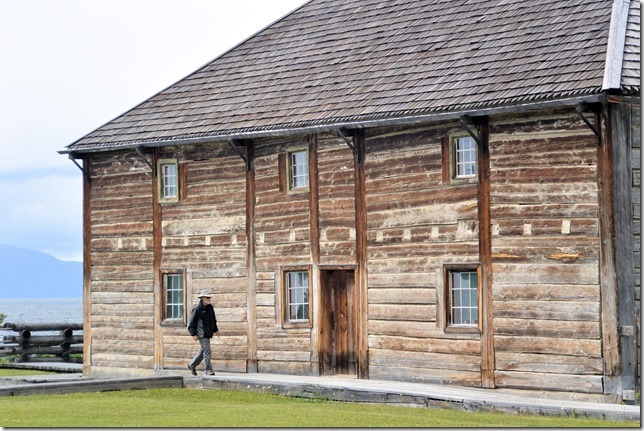
The men of Hudson Bay Company shipped their furs down a chain of lakes, rivers, and portages to the Pacific Ocean, where freighter ships (first by sail, then by steam) would carry them around the Horn for the storm-tossed two-year trip back to Britain. Letters of news, information, and finance would also travel the same long journey. (Overland commerce by land across this northern wilderness was simply impractical in any season.) This was home, a very long way from home.
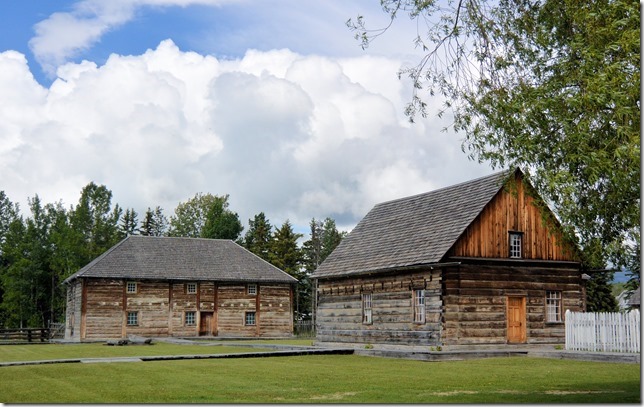
A lot of work has been done to preserve the originality of the old buildings. Here’s an early-era padlock on one of the doorways.
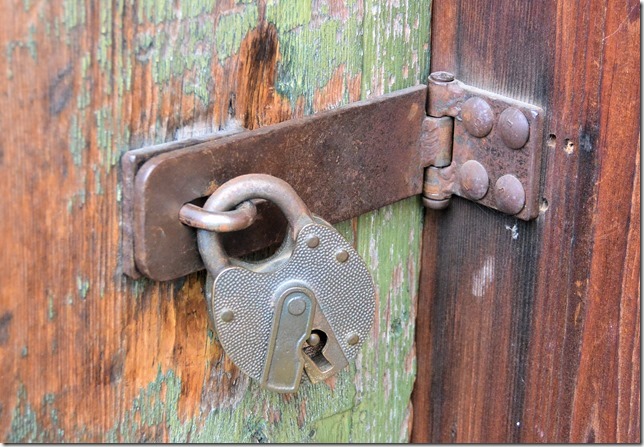
The central area in the compound is used during the short but productive growing season. Today, a young share-cropper tends his vegetables with a cheery attitude.
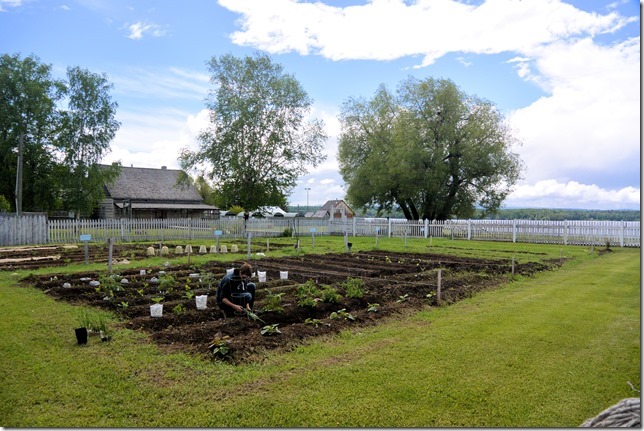
Fort Saint James was one of the first, but by no means the last. After the area tamed down a bit, the outlying area population grew; this old church was built outside the Fort, further east along the lake shore.
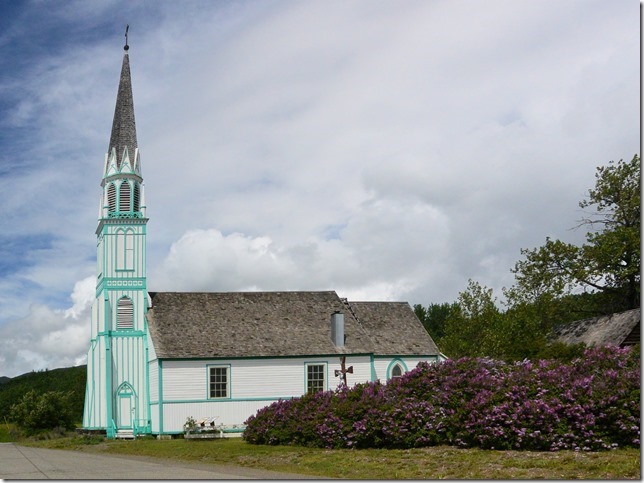
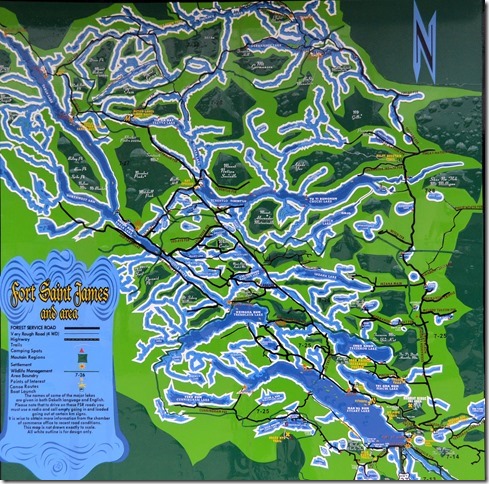
Fort Saint James (bottom right corner) is situated in an area of low hills and shallow valleys, with a plentiful water supply. The resulting array of lakes and rivers made for superb fur production and water-borne transportation back in the heyday of the Hudson Bay Company.
These days, the region is a mecca for water sports, fishing and hunting, and winter ski activities. There are literally hundreds of miles of shorelines, snowmobile/ATV trails, and back roads, all waiting to be explored. Every fishing access point has signs up indicating the potpourri of trout and whitefish in the particular area.
We took a small nibble at them and drove Ralph around the countryside for a day, to see some of the area for ourselves.
First sign going out of town. You just know that tourists are highly regarded people when they have their own trash can. We feel pretty special as we start our drive.
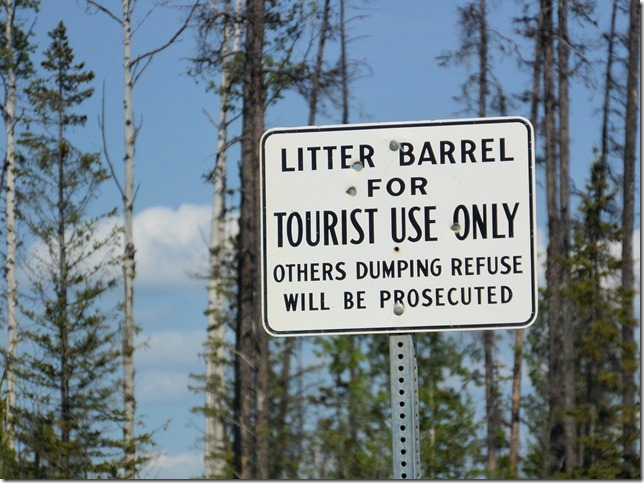
Off the paved road out of town, the dirt road still looks pretty good. These less-expensive corridors go on and on for miles. They are the ground-based arteries of the back-country transportation system.
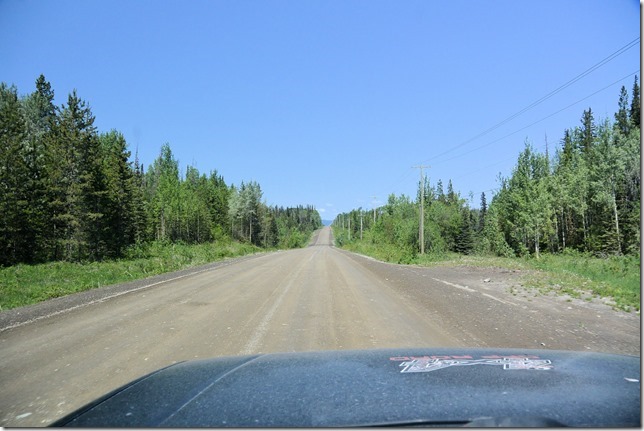
Spur roads off the mains get more twisty and narrow, but still 2WD friendly.
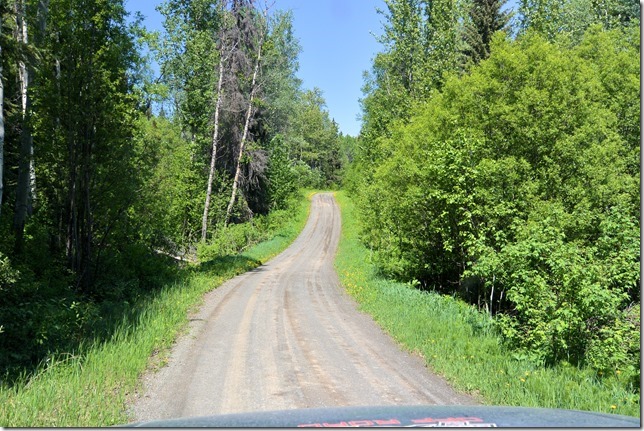
And finally the REAL roads that need 4WD churn through the forest and turn into ATV/snowmobile trails, or simply disappear like this one diving into Pinchi Lake.
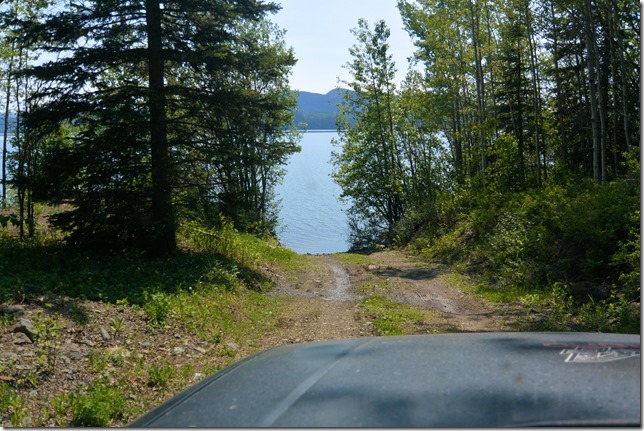
The overwhelming impression is one of a vast fishing and hunting area. Lots of people pull small fishing boats way into the back country. There is no really breathtaking scenery, but there are miles upon miles of waterways, lakes, rivers and streams. Not a wilderness, but still pretty wild. We saw our first moose and black bear in this area. Add to this the proximity to St. George (pop 70,000), and it’s not hard to imagine the insurge during the summer. In fact, we’re kinda glad we were here before peak season; we’ve never been much for crowds.
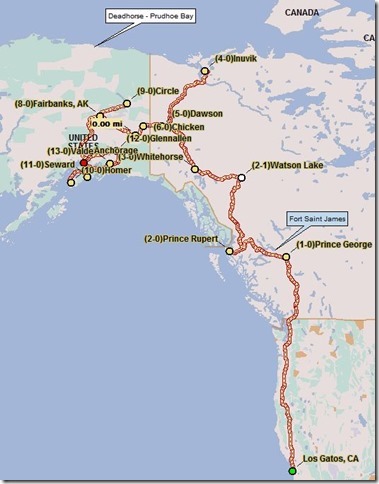
- Miles driven (Howie): 1,910
- Miles driven (Ralph): 396
- Days traveling: 15
- Miles from home: 1,503

I really enjoyed this blog, Greg. Welcome to Life In The North Country.
Hi Greg and Karin, I’m really enjoying your Travelogs as I always have. Almost (but not quite) like being there. Have a wonderful day. Much love, Mom
Great stuff, Greg. I so enjoy your style of writing!
We are off to Cape York this weekend, for 2 months remote travel, so could be kinda quiet from this neck of the woods. Safe travels.
I wish you were headed into Skagway, and taking the Chilkoot rail trip. It is awesome!!! But I know you cant do everything.
Actually, with nearly four months to spend, we can do a LOT. We’re thinking about the Haines/Skagway area as a part of our return trip. The Chilkoot Pass is legendary….